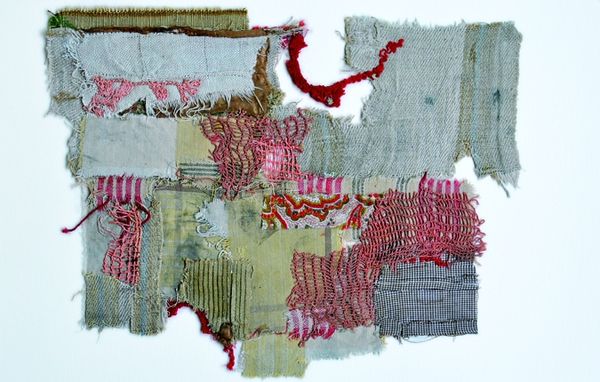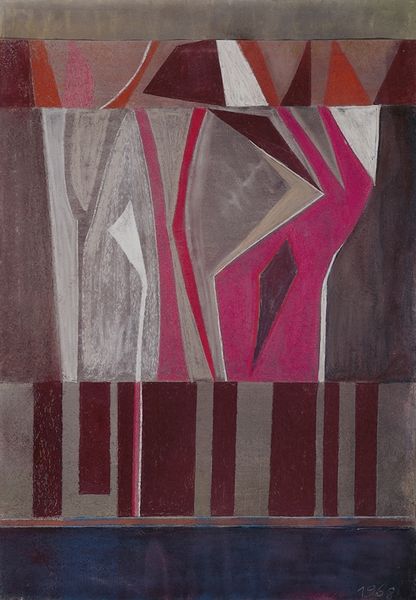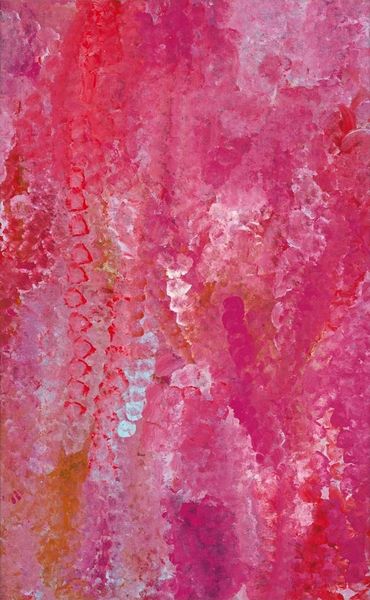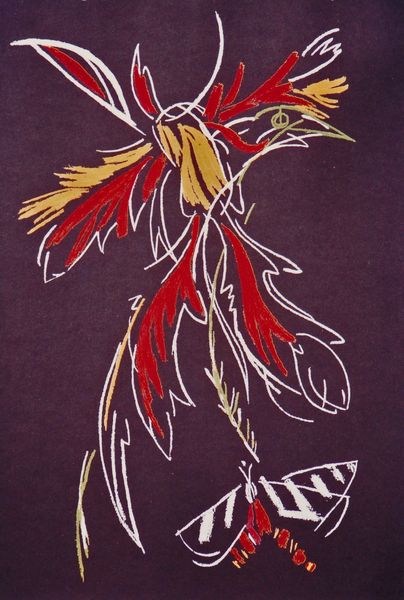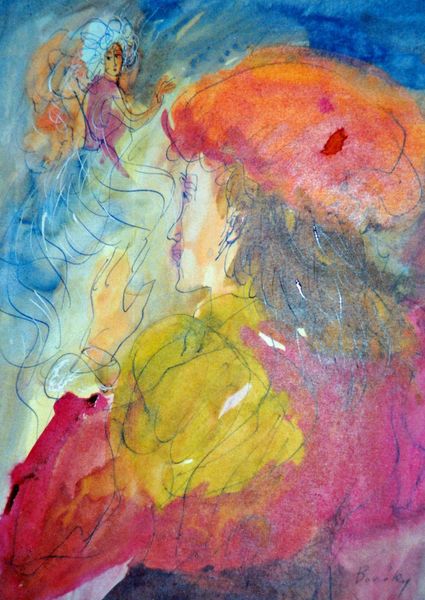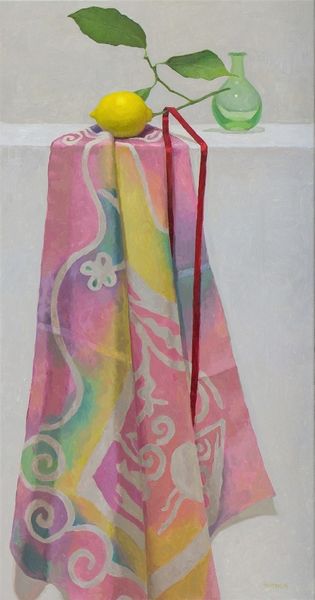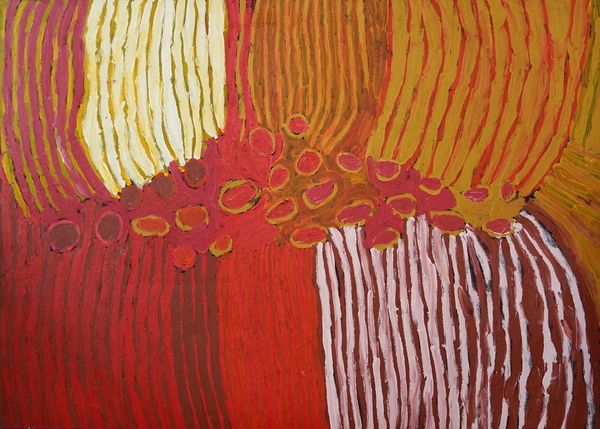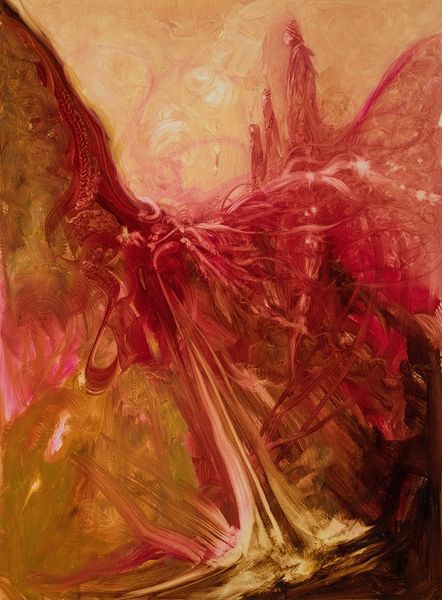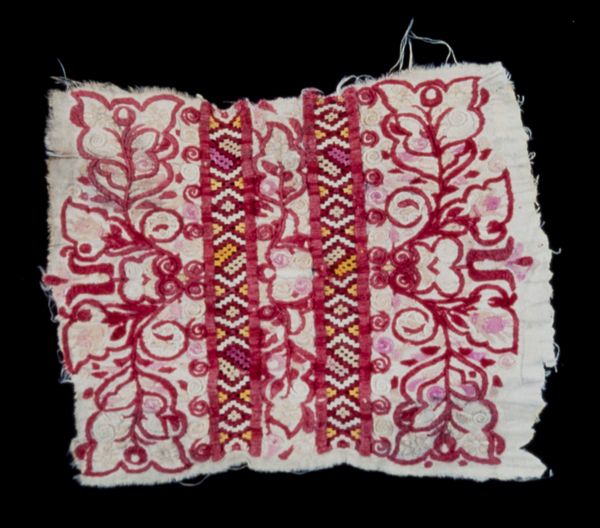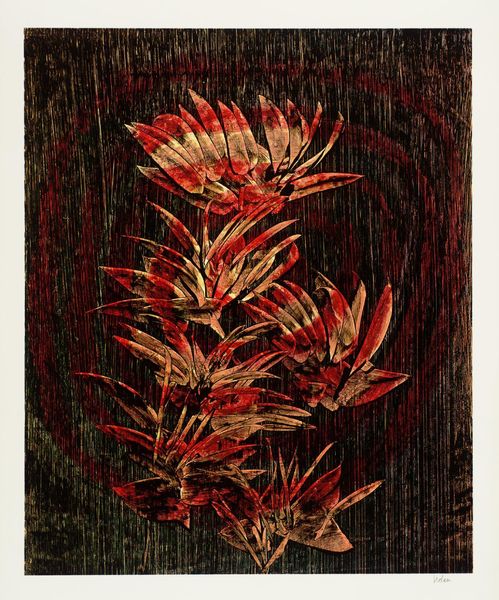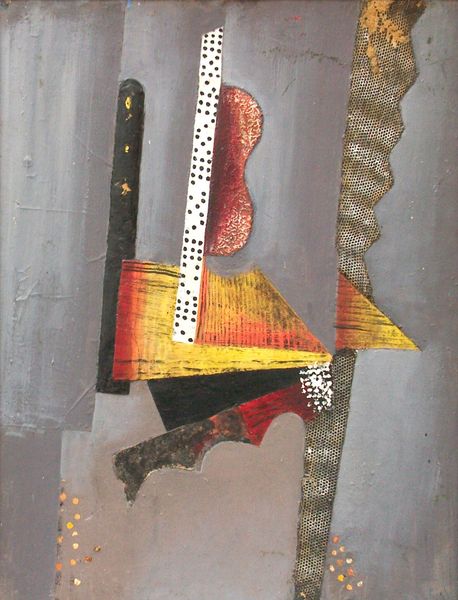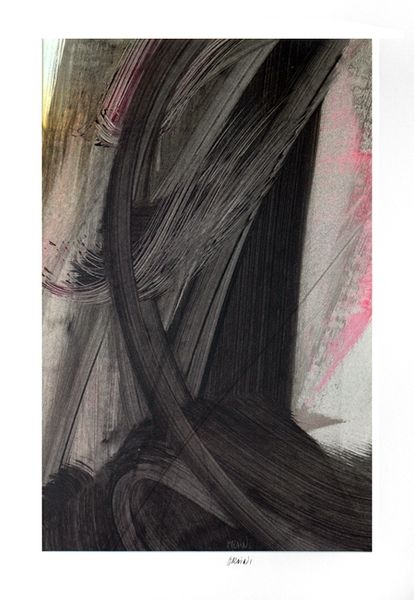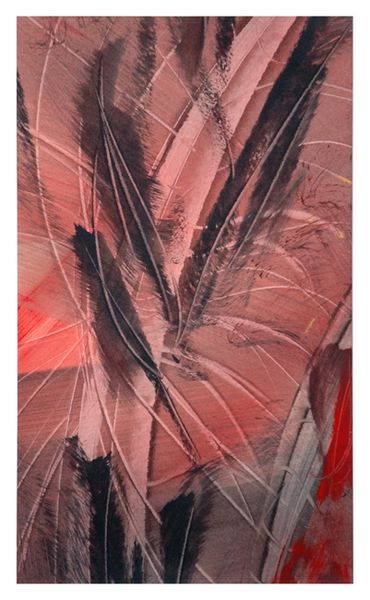
mixed-media, fibre-art, weaving, textile, ink
#
mixed-media
#
fibre-art
#
abstract painting
#
weaving
#
textile
#
text
#
ink
#
abstraction
#
painting art
#
textile design
#
decorative-art
#
decorative art
Copyright: Carles Delclaux Is,Fair Use
Curator: Right now, we're standing in front of Carles Delclaux Is's "Figura 69," created in 1989. It's a striking piece, predominantly textile-based, incorporating mixed media, ink, and weaving techniques. Editor: Well, "striking" is definitely one word for it! My initial reaction is one of intense…texture. I mean, there's this cascade of crimson and cream, almost like a geological upheaval right there on the canvas... or should I say, tapestry? It's anything but flat. Curator: Exactly! The "canvas," if we can call it that, challenges conventional painting by blurring the lines between texture and image. Looking closer, one notes the use of what appears to be abstracted writing in one corner. Its role, one could suggest, seems almost incidental in an art world sense – adding just another layer in what would appear a collage-like configuration of woven items and media Editor: It certainly has that raw, expressive edge of textile design... Do you think Delclaux Is was deliberately referencing, or even critiquing, traditional textile art with something that is, to some extent, both familiar and radically different? The muted colours create a very somber effect against the rough, dynamic lines. Curator: Delclaux Is operated within a historical framework heavily influenced by abstraction, a language through which personal expression and perhaps, societal reflection could find a voice. We can look at "Figura 69" through the lens of that decorative-art lineage, but it goes against many conventions, that’s for sure! It stands as an aesthetic testament to his distinctive blend of artistry. Editor: Perhaps the 'decorative' is just an anchor. Like we’re meant to see beauty in disruption... the rawness here just grabs you. Makes you question the established notions of, what, proper textile artistry should be... It does leave one in deep thought. What would you say its most resonant legacy might be? Curator: I see his work as an introspective reflection of cultural forms. Delclaux’s art speaks to an audience eager for dialogue between material and message – perhaps, too, encouraging new readings into textile art. Editor: An aesthetic challenge and deeply layered work that just prompts so many intriguing, unanswerable questions... it is now hard not to see it through my perspective.
Comments
No comments
Be the first to comment and join the conversation on the ultimate creative platform.
